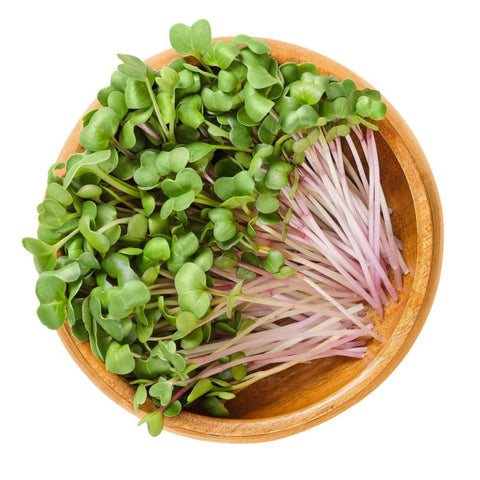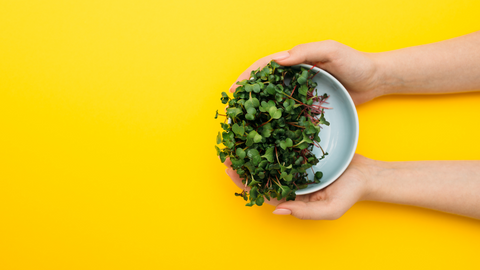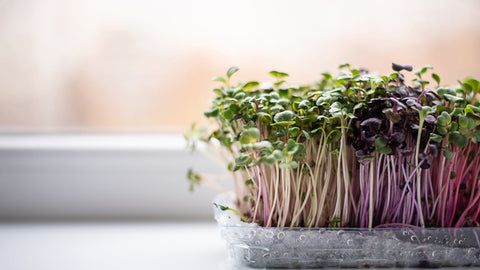With the busy and active lives we tend to live these days, making sure you’re eating well and getting your essential doses of vitamins and nutrients can often be difficult. Many people turn to dietary supplements, but these can be both expensive and often have questionable ingredient lists. Microgreens offer a healthy and natural way to incorporate nutritious veggies into your diet, plus they’re fun to grow and perfect for beginner gardeners!
In this blog, we’ll be sharing some of the primary health benefits of microgreens, and if you’d like to learn more about how to grow them, the options available, as well as tips and tricks for incorporating them into your diet, feel free to check our separate blogs that cover these topics and more.
Why Are Microgreens Healthy?

There are a few qualities of homegrown microgreens that come together to result in their designation as a ‘superfood.’ First, they are nutrient-dense – meaning they are concentrated sources of vitamins, minerals, and antioxidants. Compared to their adult counterparts, they contain up to 40x the vitamins (Source) and a broader spectrum of antioxidants (Source).
Second, they are suitable to eat raw, which helps them retain their nutrients, as the high heat in cooking can destroy enzymes, vitamins, and phytonutrients (Source).
Finally, when homegrown, they’re fresh! As soon as any plant is harvested, it starts to lose its nutrients. For example, spinach loses 90% of its Vitamin C within 24 hours of harvesting (Source). When you harvest moments before eating, you ensure that you’re getting all of the nutrients of the living plant.
Microgreens are a good source of…

Each microgreen variety has its own ensemble of good stuff, but generally speaking, microgreens are a great way to get your vitamins, minerals, and antioxidants. These are the raw materials that your body uses to perform hundreds of actions every day – from making your skin glow to healing wounds and shoring up your bones. You’ll also often read they are “high in fiber,” and while this is technically true on a percent basis, fiber is really about total volume, so you’re better off with big veggies there.
- Vitamins: These are organic substances made by plants or animals. Microgreens tend to be rich in vitamin C, vitamin E, and carotenoids (which aren't vitamins themselves, but are used by our body to make vitamin A) (Source).
- Minerals: These originally come from the earth and water & are then absorbed by plants and stored in their seeds and plant mass. The minerals microgreens tend to be the richest in are potassium, iron, zinc, magnesium, and copper (2, 3).
- Antioxidants: Antioxidants counteract unstable molecules that damage our body’s cells and DNA. One category of antioxidants, called polyphenols, is abundantly rich in brassica microgreens – like our Red Russian Kale – with samples containing 164 unique types (Source). Another category of antioxidants, called carotenoids, was found to be about 5 times greater in microgreens than adult leaves (Source).
If you’d like to learn more about what microgreens are, how to grow microgreens, different types of microgreens, or how to incorporate microgreens into your cooking – then check out our separate blogs on these topics. Or if you’re ready to jump right in and get growing, check out our beginner-friendly Microgreens kits below.









There are no comments for this article. Be the first one to leave a message!